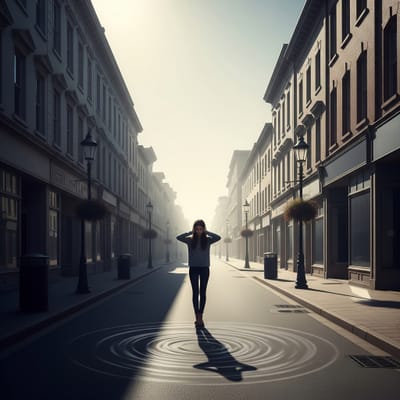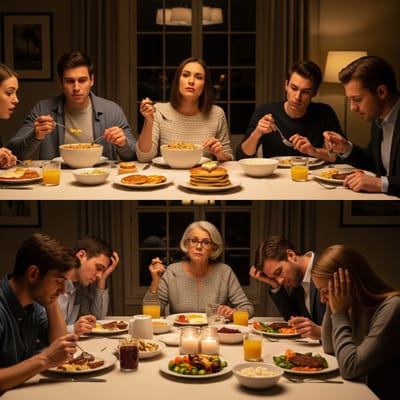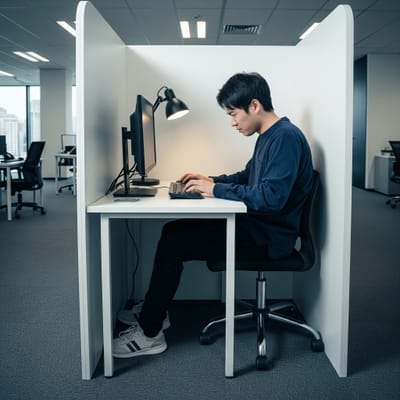The Case of the Mandatory Mime Flash Mob: Performance Art as Public Burden
Why: Similar to the poodle parade, this is a forced, impractical, and arguably pointless activity. While he might appreciate art, compelling citizens to participate in disruptive, non-verbal public performances would scream "lack of purpose" and "unconstitutional burden on personal liberty" to his pragmatic mind. The disruption to the "orderly flow of society" would be a key point of contention.
In the quirky coastal town of "Silent Springs," known for its avant-garde artistic community, the city council, in a burst of creative civic pride, enacted Ordinance 303, "The Universal Expressive Participation Act." This unique law mandated that every resident, at least once per month, participate in a city-organized "Mime Flash Mob" at a designated public space—be it the town square, the local farmers' market, or even the main intersection during rush hour. The stated goal was to foster community engagement, promote artistic expression, and put Silent Springs on the map as a hub of unique performance art. Predictably, this forced foray into silent theatrics sparked outrage, culminating in Silent Springs Residents for Free Expression v. City of Silent Springs, a lawsuit now awaiting review by the Supreme Court.
Justice Stephen Breyer, with his characteristic emphasis on pragmatism, the practical consequences of laws, and the orderly functioning of society, would find "The Case of the Mandatory Mime Flash Mob" to be an extraordinary example of governmental overreach that fundamentally misconstrues the purpose of both art and public policy. While he understands the importance of free expression and cultural enrichment, compelling citizens into disruptive, pointless performances would utterly fail his pragmatic test for a legitimate and reasonable public enactment.
When Expression Becomes Exaction
Breyer's Eye Scream!
Breyer would immediately delve into the stated purpose of the ordinance: fostering community, artistic expression, and tourism. He would then meticulously compare this against the actual, observable consequences and the practical burdens imposed on the citizens of Silent Springs.
- Disruption to the Orderly Flow of Society: The most glaring practical consequence would be the sheer disruption to daily life. Mime flash mobs, by their very nature, involve sudden, often obstructive, and certainly attention-grabbing performances in public spaces. Imagine trying to navigate a busy sidewalk, rush to a doctor's appointment, or deliver goods, only to be confronted by a silent tableau of individuals trapped in an imaginary box or struggling against an invisible rope. This isn't just an inconvenience; it's a direct impediment to commerce, transportation, and the general functioning of the town. For Breyer, a law that systematically creates chaos and hinders the efficient movement of people and goods lacks any rational basis. The "purpose" of community engagement is undermined by the "consequence" of public exasperation and gridlock.
- Unconstitutional Burden on Personal Liberty and Autonomy: This ordinance is a profound infringement on personal liberty and autonomy. The First Amendment protects not only the freedom to speak but also the freedom not to speak, and by extension, the freedom not to perform. Forcing individuals, regardless of their artistic inclination, schedule, physical ability, or personal beliefs, to engage in a public performance is an unprecedented and deeply invasive form of governmental compulsion. What if a resident is shy, suffers from social anxiety, has a physical disability that prevents participation, or simply finds mime absurd and demeaning? The law offers no exemptions, transforming a voluntary artistic endeavor into a mandatory, humiliating obligation. Breyer would see this as a clear violation of the individual's right to control their own body and expression.
- Lack of Purpose and Rational Basis: Breyer's pragmatic mind would search for a rational purpose behind such an extreme measure. Is a mandatory mime flash mob truly the most effective or even a remotely reasonable way to foster community or promote art? Surely, voluntary art programs, public grants for artists, or cultural festivals would achieve these goals without infringing on fundamental rights. The "purpose" here is so tenuous and the "means" so extreme that it would suggest an arbitrary and capricious exercise of governmental power. He might ask, "What tangible benefit does the city gain that justifies forcing its citizens into a silent performance every month?" The answer, from a practical standpoint, would be negligible, if not negative.
- Waste of Public Resources: While the direct financial cost might not be as high as a drone network, there would still be practical costs. Organizing these events, enforcing participation (imagine the ticketing for "non-miming"), and managing the resulting public complaints would divert police and administrative resources away from legitimate public services. Breyer would view this as an inefficient allocation of public funds towards an impractical and arguably frivolous endeavor.
- Chilling Effect on Genuine Expression: Ironically, a law designed to promote "artistic expression" could have a chilling effect on genuine artistic freedom. When performance becomes a chore, an obligation, or even a punishment, its intrinsic value is diminished. True art often springs from individual inspiration and voluntary participation. Compulsion breeds resentment, not creativity.
In the courtroom, Breyer would likely challenge the city's attorneys on the mechanics and justification of such an ordinance. He might ask: "How do you define 'participation'? Does a single dramatic gesture count? What if someone simply stands there, silently refusing to mime? What is the penalty for non-compliance, and how is it enforced without violating individual rights?" He would probe the absurdities inherent in regulating mandatory artistic expression.
Ultimately, "The Case of the Mandatory Mime Flash Mob" would be a quintessential example of a law that Breyer's pragmatic philosophy would reject out of hand. It is impractical, disruptive, unnecessary, and an undeniable burden on personal liberty, all for a perceived "purpose" that could be achieved through far less intrusive means. For Breyer, the consequences of such a law—public annoyance, infringement on freedom, and a general erosion of the orderly functioning of society—would far outweigh any nebulous artistic or civic benefits. His opinion would likely be a scathing, yet practically reasoned, condemnation of a policy where performance art transforms into an unacceptable public imposition, affirming that even the pursuit of culture must respect the fundamental rights and practical realities of everyday life.
Video created with Gemini Pro for the Eye Scream series, a tribute to Justice Stephen Breyer.






